ISSUE
SPRING 2023
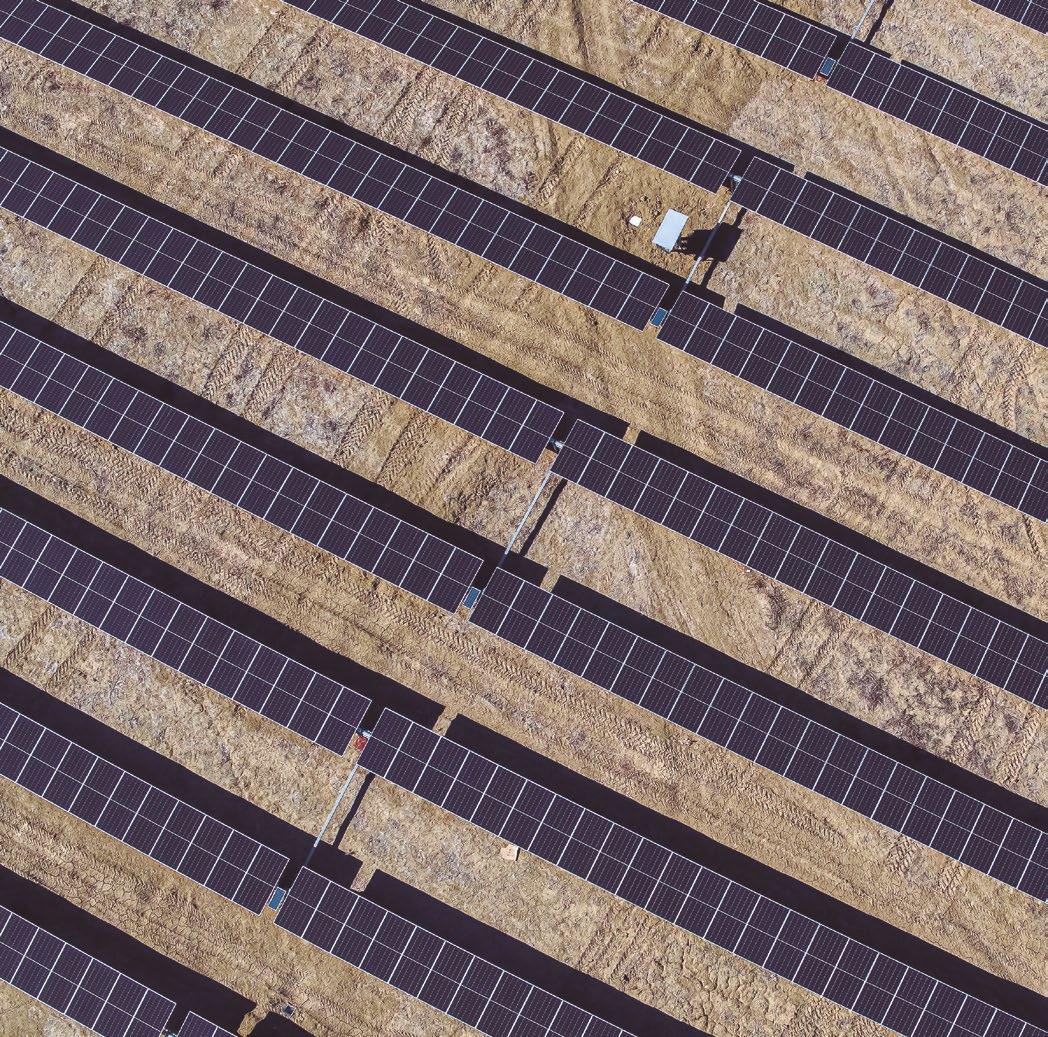
ENERGY I SUSTAINABILITY AND ENERGY CENTER OF EXCELLENCE• SUBWAYS: EMBLEMS OF THE COMPANY • EL BERROCAL • TWO-WAY INTERVIEW • A PLACE TO WORK: NEW YORK 35
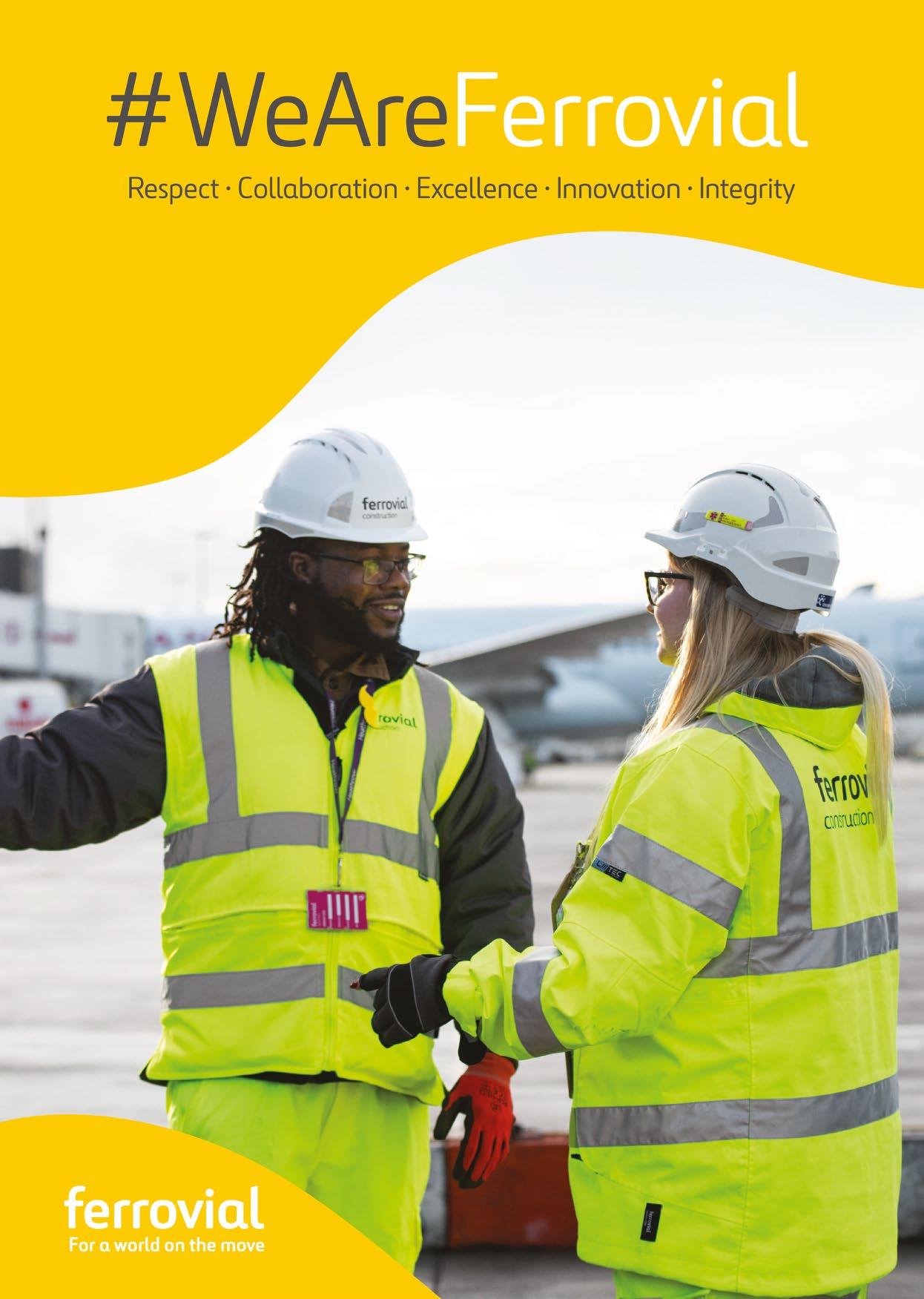
A unique culture for a world on the move
FOCUS
Sustainable energy for a more efficient future
As a company, we must address the energy transition without losing sight of business needs.
Driving the energy transition and combating climate change by developing sustainable infrastructures is more than an objective — given the state of the planet, it is an imperative. The challenges posed by the fight against climate change require us to focus our efforts on achieving more and better outcomes in this battle. As a leading company in sustainable infrastructures, we bring our vital need to identify projects and opportunities that have an impact and also serve as a benchmark of best practices.
In this struggle to find catalysts for change, we are swept along by the tide of global demand for clean, sustainable energy sources. We can only consider a form of energy to be sustainable if it holds true throughout the value chain; this includes everything from the extraction of the material needed to produce it to decommissioning the facility at the end of its useful life.
However, unless significant progress is made with current technology, there will not be enough clean energy to meet the needs of global economic growth. As a company, we must face the energy transition with an understanding of the climate challenge we face but without losing sight of the needs of the business.
We are on the right track to mitigate the long-term effects of global climate policies and actions that represent a poor relationship with the ecosystem. Raising awareness about the climate impact of sectors such as energy, transportation and industry is a big step in the right direction. Aware that the company's efforts towards sustainability will be welcomed by society in general and by investors in particular, Ferrovial will maintain its firm commitment to business transformation.
Amid growing global demand for clean, sustainable energy sources, sustainability stands as a cornerstone of the energy transition and the company's transformation. Advancing the fight against climate change and the energy transition while developing sustainable infrastructures means creating value in energy and sustainability.
The energy of the future must be clean.
SUMMARY
04. OPINION
The importance of principles
05. PEOPLE Sounder infrastructures through talent
06. IN DEPTH
El Berrocal: power plant
08. ENERGY AND INNOVATION
Sustainability and Energy Center of Excellence
12. INTERVIEW
Armando Zuluaga and María José Esteruelas
16. CONSTRUCTION
Subways: emblems of the company
22. TRAVEL A place to work: New York
26. HEALTH&SAFETY
Training and recognition
28. CSR Ferrosolidaric to the core
30. BIZNEWS
32. FIGURES
3 INFORVIAL / 2023
Staff Published by: Dirección de Comunicación y Responsabilidad Corporativa. Coordination and production: Paz Jiménezmpjimenez@ferrovial.com. Copy: Tania Alonso. Layout: Olga Zabalza. Infographics: Abel Cuevas and Raquel Mulas. Translation: Versalia and Mike Viesca - mviesca@ferrovial.com. Printing and distribution: Coyve Artes Gráficas. The following people contributed to this issue: Juan Francisco Polo, José Luis Cobas, Yiğit Laçin, Tony Caccavone, Aranzazu Rodríguez, Javier López, Lola Romero, Juan Carlos Guerra, Mario Alonso, Ricardo Munguía, Enrique Blanco, Alberto Molne, Ricardo Ferreras, Luis Rallo, Manuel Ruíz, Manuel Manjon, Irene Madera, Belén de los Riscos, Inés Cruces, Ricardo Navas, Armando Zuluaga, María José Esteruelas, Guillermo Ripado and Tori Palermo. Inforvial does not necessarily share the views expressed in this magazine. Reproduction prohibited. All rights reserved. / Inforvial. Príncipe de Vergara 135. 28002. Madrid. E-mail: comunicacion.interna@ferrovial.com
THE IMPORTANCE OF PRINCIPLES
JUAN FRANCISCO POLO
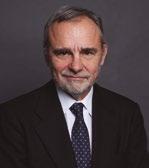 Director of Communication and CSR
Director of Communication and CSR
The last few years have seen a succession of crises that have destabilized families and jeopardized the continuity of companies. The financial crisis of 2007, which caused an economic cataclysm like few others in history, was followed by COVID-19, an epidemic without precedent for humanity. And now the conflict in Ukraine is a reminder of World War II and, more recently, the civil war in Yugoslavia. Turbulent times, indeed!
These extreme circumstances force us to focus once again on core values, the foundations that support an organization's convictions and its raison d'être. Companies are no strangers to these processes. In this context, it is even more important to have a vision based on values and principles.
In 1994, Jim Collins and Jerry I. Porras published Built to last: SuccessfulHabitsofVisionaryCompanies, which was the result of an intelligent far-ranging analysis of 1,000 CEOs over a six-year period. It is just as relevant now as when it was released. This book is a classic for anyone who wants to discover the key factors underlying a company's reputation and the resulting sustained success in the market. Collins and Porras set out to discover common features in visionary companies that had survived in the markets for decades, leading their industries, with an impact on society and with a range of solutions at their disposal. They concluded with a list of some twenty large companies, including 3M, Boeing, Disney, General Electric, Ford, IBM and Merck. They compared those companies with
their rivals. And it turned out they were successfunderlying because of their leadership and their ability to innovate and to outsmart their competitors.
Collins and Porras identified a number of factors that explain those companies' success:
• Building the clock, rather than telling the time.
• A great leader makes a great company.
• The importance of purpose over an obsession with increasing profits.
• Having have solid, lasting values and principles.
• Thinking big and setting ambitious goals.
• Trying new solutions and investing in the ones that work.
• Fostering internal talent
• Maintaining the ambition to improve.
Founded in 1952, Ferrovial celebrated its 70th anniversary at the end of 2022. Many of the characteristics of visionary companies that Collins and Porras identify in BuilttoLastcan be found in Ferrovial, starting with an identity characterized by a purpose and a set of values. Our purpose is to "develop and operate sustainable, innovative and efficient infrastructures, creating value for our stakeholders". And the values of respect, excellence, collaboration, integrity and innovation have shaped our history and will map our future.
In these turbulent, volatile times, the company has nurtured its essence while pursuing its ambition for improvement, progress and innovation. And it has done that without losing sight of a company's primary purpose, namely, to offer current functional solutions for society's emerging demands. Always striving to be one step ahead of its competitors. The future is always here.
The commitment to providing sustainable new solutions for transportation infrastructure, especially in congested urban areas, is a perfect example of what Ferrovial is about. Horizon 24, the managed lanes, Aivia and the Abacus plan are some examples of a company with ambition, which thinks big and strives to achieve demanding objectives for society, its employees and its shareholders.
4 INFORVIAL / 2023
OPINION
"In these turbulent and volatile times, the company has nurtured its core values while pursuing its ambition for improvement, progress and innovation."
PEOPLE
Sounder infrastructures through talent

Airport infrastructure is a very attractive business. As it is global by nature, it offers growth opportunities in emerging and expanding markets. Dalaman in Turkey and JFK in the USA are perfect examples. Demand for air transport continues to grow,so airports are looking to increase capacity and improve their infrastructures. For a company like Ferrovial Airports, which specializes in managing, developing and operating airport infrastructures, these are profitable business opportunities that involve long-term concessions and synergies with other areas of the group.
YIĞIT LAÇIN CEO of Dalaman Airport


YDA International Dalaman is located in the Turkish Riviera, one of the most attractive tourist areas in the Mediterranean. As well as historic sites, the natural resort offers cultural, sport and leisure facilities. An idyllic and peaceful vision which contrast with the complexity involved in managing an international airport. Ensuring that all stakeholders work in harmony in this tightlyregulated industry is challenging. Yiğit Laçin says “I feel like an orchestra conductor ensuring everyone hits the right note on time”. However, this is a challenge he enjoys. His priorities this year include improving customer service, adopting more sustainable practices and raising the employee engagement. Mr. Laçin points out at innovation and digitalization as key to transforming passenger experience. As examples of this he talks about the adoption of appropriate technologies to enhance efficiency, such self-service kiosks, mobile apps, biometrics and automated baggage handling. About people, Mr. Laçin recognizes that to attract and retain talent in this competitive job market it is important to provide with opportunities for growth and development, and to foster a positive company culture.
TONY CACCAVONE MSA Director, New Terminal One, JFK
JFK International Airport is a key interntaional gateway for both New York and the United States. As the largest public private partnership (P3) project in the US, the New Terminal One will set a new standard for world-class design and passenger experience. The project will deliver one of the best airport terminals in the world. Tony Caccavone recognizes that to deliver a world class project and the world class passenger experience that goes along with it, it is esential to attract the best talent. “The project itself is hugely attractive, but we now have to go further than that to bring in the top talent. We must go beyond the normal expectations and build an organisation that nurtures, creates opportunities and empowers colleagues to deliver an amazing experience but also to enjoy it along the way. We must create a world class team.” From his previous experience at Heathrow, Caccavone knows that innovation and digitalization have to be at the heart of operations. “As airport planners, designers and builders, we must consistently bring new innovations to market. Passengers expectations are ever increasing and they now expect a seamless digital journey through the airport.” Caccavone wants to make a difference to every passenger.

5 INFORVIAL / 2023
New Terminal One. JFK International Airport, New York.
Dalaman International Airport in Turkey.
EL BERROCAL
Building and managing a power plant
Many see solar as the energy of the future. The construction and operation of El Berrocal represents Ferrovial's first incursion into the world of photovoltaic plants.
CHALLENGES IN CONSTRUCTION
Building an electricity generation plant is a challenge, but the results make it worthwhile. The El Berrocal plant has the capacity to generate more than 104 gigawatt hours of electricity per year. That's enough to meet the electricity needs of nearly 30,000 homes.
One of the first steps in building a photovoltaic power plant is choosing its location. El Berrocal is located in Seville, on a site that receives many hours of sunlight and already has a grid connection point, which is necessary to distribute the energy that is generated.

Another major step is choosing the technology, the actual elements that convert solar energy into electrical current. The technology choices for El Berrocal sought to maximize plant efficiency: the solar panels are bifacial, meaning they also capture the light reflected from the ground, providing higher yields.
“Trackers provide more output than fixed panels. This, plus the fact that trackers are now cheaper to install, provided strong arguments for this option in the design phase,” explains Irene Madera, project manager. El Berrocal plant uses single-axis trackers, which can vary their angle during the day and during the year, shifting from east to west to get the most out of the incoming solar energy.
The construction of El Berrocal faced challenges linked to logistics, weather and even price changes in the market, as a result of the instability caused by both the pandemic and the war in Ukraine. There were also difficulties in coordinating the various phases of the
project and completing it within a tight deadline. Today, the plant avoids the emission of 16,672 tons of CO2 into the atmosphere and reduces dependence on fossil fuel-based energy sources, such as coal, oil and gas. It aims to promote the use of green energies, which can reduce our environmental footprint and slow climate change. This photovoltaic power plant generates the clean energy we need to make the world a more sustainable place.
6 INFORVIAL / 2023
IN DEPTH
PLANT MANAGEMENT
Onceconstruction is complete, managing a plant presents its own challenges: running it properly to maximize its efficiency and useful life, so as to achieve the maximum profit from its output. To achieve this, Ferrovial has a maintenance plan based on the recommendations of the equipment manufacturers and a large multidisciplinary group with extensive experience in the sector.
Although the plant is located in the province of Seville (Spain), production will be controlled from a control center in Madrid. A digitalization platform makes it possible to monitor plant operations remotely in real time, providing data on which to base generation, demand and maintenance strategies. In many cases, this makes it possible to overcome problems affecting plant performance.

“The El Berrocal team focuses on preventive activities as opposed to corrective ones,” explains Belén de los Riscos, head of Construction at Ferrovial. "The emphasis is on prevention, to
minimize the number of corrective actions and avoid unscheduled downtime.”
Health and safety are also important factors in plant management. It is vital to ensure the safety of the people working on the facility and installations' security. Innovation also plays a role: the Energy Infrastructure Innovation team is developing a battery storage system that will enable El Berrocal to continue to supply power after sunset.

KEY COMPONENTS
Converting the sun's energy into electricity with a photovoltaic plants involves photovoltaic modules, inverters, transformers and electricity substations. As Francisco Javier Escudero Rubio, head of engineering in Ferrovial's Renewable Generation department, explains, the process begins when solar radiation strikes the photovoltaic modules. The modules generate direct current which is converted to alternating current by an inverter. The transformers and substations then raise the electrical voltage. Electricity is transmitted from the plant at high voltage. It travels through the electricity grid to charge the batteries of our telephones, drive household appliances and charge electric cars, among many other examples.
7 INFORVIAL / 2023
El Berrocal has the capacity to generate more than 104 gigawatt hours per year, enough to power close to 30,000 homes.
6 QUESTIONS ABOUT THE NEW
Sustainable and Energy Center of Excellence
According to the International Renewable Energy Agency (Irena), the global renewable energy market will double in size by 2030. To seize this opportunity, Ferrovial has created a new energy business and established the Sustainability and Energy Center of Excellence (CoE), the third CoE in its Innovation Department.

1 What is the Sustainability and Energy CoE and what does it do?
The mission of Ferrovial's Sustainability and Energy CoE is to identify and develop transformative innovative solutions, and to coordinate the horizontal sustainability and energy innovation program. Together with the sustainability and innovation teams from the business areas, focusing particularly on the energy business, it defines the strategies that drive business growth.
2 What are the three main objectives for this year?
The first is to promote the development and deployment of renewable and low-carbon energy technologies on Ferrovial's infrastructures. The second objective is to promote sustainability as a cornerstone from the design phase througt a project’s life cycle. And thirdly, the Sustainability and Energy CoE aims to promote knowledge and implementation of sustainable practices, and to work with industry and government partners to advance sustainable energy solutions.
8 INFORVIAL / 2023
INNOVATION
With information from: Aranzazu Rodríguez and Javier López.
3 How are business priorities set when it comes to innovation?
Business priorities are established based on an analysis of existing challenges and needs and also by incorporating the opportunities and trends offered by the market, including adjacent and synergistic markets.
4 How does the innovation process take place?
With the help of innovation stakeholders (research centers, universities, and startups, including MIT and the MIT Energy Initiative), we propose and analyze the best opportunities and converge toward solutions that best meet the organization's needs. After defining the proofs of concept, or the values on which to base a trial in a controlled environment, the Sustainability and Energy CoE brings in company personnel and units that are needed to maximally leverage internal know-how. Once the business in question has validated the results, it takes responsibility for escalating the solution and leveraging its full potential.
5 What initiatives are on the cards to promote an ecosystem of innovation in sustainability?

A sandbox, i.e. a space for experimentation, to implement new models outside regulatory boundaries, and transformational training programs in sustainability and energy.
6 What is the main challenge for value creation in energy and sustainability?
This CoE wants to involve all relevant stakeholders inside and outside the organization. Its first steps include making itself known (both internally within Ferrovial and to the innovation ecosystem in general), defining the transformation pillars and programs, and starting to deliver value with the first proofs of concept and by supporting projects.
In the current context, the implementation of sustainable measures will attract attention in a society that is increasingly aware and will generate investor interest.
Star projects
INCA
Stands for Integrated Natural Capital Assessment. It is a tool for assessing in detail the impact that infrastructures have on natural capital and ecosystem services and for presenting solutions with a smaller environmental footprint. INCA provides an innovative approach to appraising the debt owed to nature, while building infrastructure that is vital to the development of society. Progress is currently being made with digitalizing the methodology (by the Asset Management CoE) and integrating it into the Salesforce horizontal platform.
STORAGE WITH SECOND LIFE BATTERIES
By installing second life batteries (from electric vehicles) for residential and commercial applications, Ferrovial favors the circular economy by giving a second life to batteries which, though no longer suitable for use in cars, can obtain a new lease of life and contribute to minimizing consumption of lithium, a scarce resource.
MANAGING WITH MICROGRIDS
Microgrids refer to locally managed energy production and distribution, either freestanding or grid-connected for greater efficiency. A microgrid is composed of a series of subsystems and management software. The Smart Grids project focuses on implementing an energy management and optimization platform for smart active management of a range of energy resources.
REMOTE O&M USING HOLOLENS
The Remote Assist project implements cloud and artificial intelligence solutions to provide remote assistance to Ferrovial workers and streamline and simplify training processes. Trimble XR-10 devices with Hololens 2 were used in two proofs of concept to provide support in remote areas: the transmission lines project in Chile and the El Berrocal solar photovoltaic plant in Spain.

9 INFORVIAL / 2023
IKONGREEN
The challenges posed by the fight against climate change require us to step up our efforts, which is why technological innovation in energy is essential. The technology of the future must be clean and sustainable but also diverse, interconnectable, efficient and fair. Those are the characteristics of the Ikongreen on-site modules, another of the Sustainability and Energy CoE projects, designed and manufactured by Ferrovial through Siemsa.
•
•A total of 72 square meters of photovoltaic panels (36 panels measuring 2 square meters), which can be installed on the roofs of the modules or at ground level, to which machinery can be connnected and which can recharge electric vehicles thanks to the installation's 16 kWp capacity and the integrated recharging point.

•The represent a hub of the circular economy, providing safety and connectivity at construction sites.
•The project was chosen as a finalist among the 110 ideas proposed in the Sustainability Challenge launched by Ferrovial's Zuritanken incubator. The winning proposal came from Pedro Riesco, Eduardo Moral and Fernando San José.

I kongreen complies with circular economy requirements as the system is assembled in recycled shipping containers. In addition to generating the electricity consumed on site, it has a second module (also a recycled shipping container) that is used to transport the solar panels and as a waste recycling center. This services module is equipped with inverters, storage batteries, energy management and control systems, telecommunications hardware, and the necessary connections to service the office modules and

site equipment. It also has space for presentations to teams in a virtual classroom and for health and safety teams. These containers are manufactured by Ferrovial through Siemsa, which is specialized in engineering, construction, installation and maintenance of substations and lines, as well as electrical assembly and maintenance for industry. At the current stage of the project, the objective is to identify potential markets and industries where Ikongreen could grow as a business.

10 INFORVIAL / 2023
Designed by Ferrovial employees, Ikongreen is a power supply module that reduces power purchases and CO2 emissions on site by up to 90%.
The aim
W reinforce thank HSW responsibilities.
how our colleagues and our teams are making, our workplaces better, safer and healthier every day.

Who can participate?
Any workplace, team or employee of Ferrovial can participate in these awards and recognitions Participants may submit as many entries as they wish.
All entries that meet the criteria will be awarded and recognized.
All submissions must be accompanied by the necessary information to support the nomination The more accurate the description, the better the candidate’s chances of beeing awarded and recognized.
Assessment Procedure for Entries
The entries will be evaluated by a multidisciplinary jury from the HSW Department and Senior Management, assessing with total impartiality and confidentiality.
The selection of the winners will take place in three stages: 1
A pre-selection provided by the HSW responsible of the subsidiary/ BU
2
An evaluation provided by the jury.
3
The candidates that pass step 2 will go to the CEO for his final approval
Judging period:
The award and recognition will be provided once per quarter
Notification of the recognition:
First month of the following quarter
Award
The award for each category will consist of a certificate signed by Ferrovial’s CEO
Scan the QR code or log into the Health, Safety and Wellbeing Hub

Scan the QR code or log into the HSW Hub where you can find further details and submit your nominations.
At the end, you will see that you must attach a detailed explanation for your submission and as many attachments as you deem relevant to support your nomination.
Energy will become a key focus in 2023. María José Esteruelas
and Armando Zuluaga are working hard to make it happen. They want to turn this field into a business that generates good results and has the same customer recognition as Ferrovial’s other projects. That’s no easy feat! María José and Armando know their mission is to provide solutions and positive returns, and they intend to fulfill it.
ARMANDO ZULUAGA
Head of Energy Infrastructure
Following his passion in international relations, Armando Zuluaga decided to skip the family tradition of medicine to pursue a career that would enable him to work in different industries. He obtained a degree in Law and a Master in European Union Law from Carlos III University in Madrid, followed by an Executive MBA from San Telmo Business School in Seville. In addition to his accumulated experience, he brings his earnest professional approach.
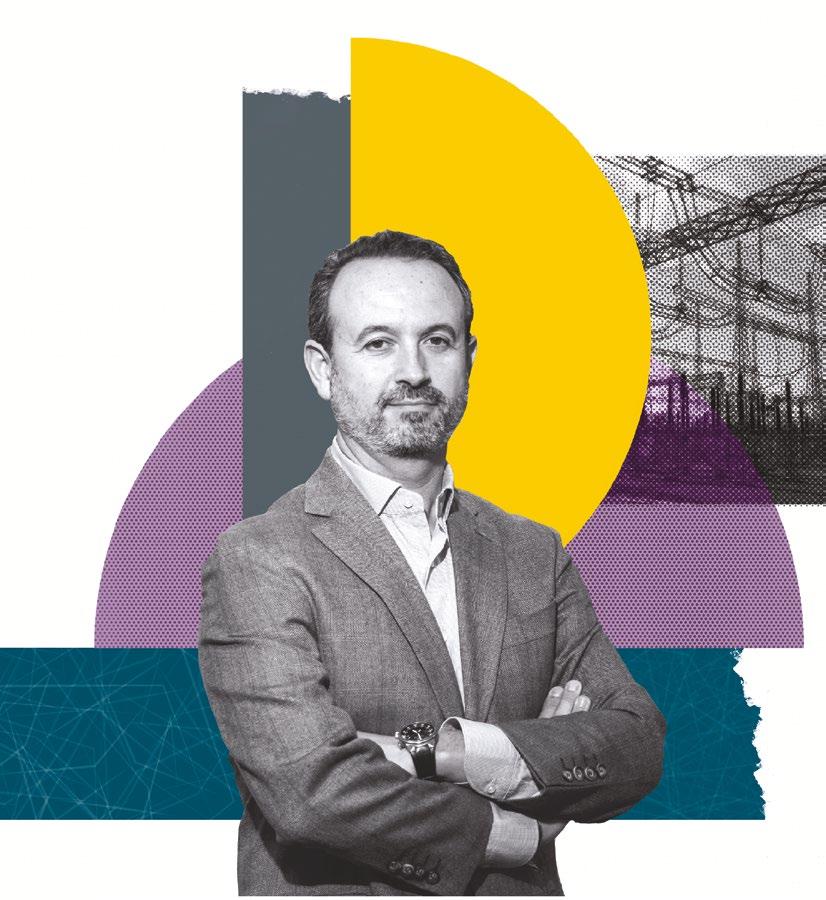
12 INFORVIAL / 2023
INTERVIEW
“Everyone is responsible for managing their area and their results”
Infographics: Raquel Mulas.
Photo: Moisés Pérez.
&
MARÍA JOSÉ ESTERUELAS

The energy industry is undergoing a profound transformation that affects society as a whole, and this makes it necessary to understand the problems and find innovative solutions. Armando Zuluaga and María José Esteruelas, our two (energetic) guests discuss where they are in their careers and how they leverage their experience to benefit the energy industry.
How would you summarize your career before you joined Ferrovial?
A.Z.: Very varied but, above all, tremendously challenging and very entertaining.
M.J.E.: I spent 24 years at Abengoa and I was never bored. I worked in bidding, operations, concessions, engineering, execution, horizontal units and geographies ... Rotating really helps you understand the needs of other departments.
Why did you choose Ferrovial or why did it choose you?
A.Z.: It is a company that has always been a trailblazer because of its professionalism, reliability, honesty and know-how among Spain's leading industrial companies. The idea of starting a new line of business within the group was very appealing. In a way, it meant going back to my origins by replicating something I had
Head of Energy Solutions at Ferrovial Construction
Finding out how things work is a passion like any other. Opening up singing dolls or fixing Scalextric cars was what drove María José Esteruelas as a child, and she ended up becoming an Electrical Engineer. She graduated from ICAI and obtained a Master's degree in Operations Management from IE Business School and an MBA from IESE. She gets enthusiastic easily and enjoys launching new projects and working in a team, always with good planning, as that's the way to ensure you get those 'Eureka' moments.
already done in the past in other large industrial groups, of which I have great memories.
M.J.E.: I needed a change, so I made a checklist for my ideal employer: engineering and construction, Spanish but with an international footprint, a leader in its sector, solid, with unimpeachable governance and a strong corporate culture. I told a headhunter and he said: “What you're looking for has a name: it's called Ferrovial.” Some months went by, and Ferrovial called me.
What would you highlight about the company compared to other places you have worked?
A.Z.: As a distinguishing feature, I would highlight the culture of delegation of responsibility that makes each member of the team feel responsible for their decisions within their respective spheres of decision-making. At Ferrovial, everyone is responsible for managing their area and for their results.
M.J.E.: The focus. Here, you take a subject and you go deep, really deep. Decisions are always based on exhaustive analysis. We always take an extra look at everything. We focus on the countries where we want to be, the clients we want to work for, the partners we want to work with, and the type of projects we are interested in. It gives you a lot of confidence.
13 INFORVIAL / 2023
“Rotating (among job duties) helps you understand the needs of other departments”
How do you see the energy industry?

M.J.E.: We are at a historic moment of change towards cleaner energy and more secure supply. Economic, climate and energy independence requirements have aligned and are accelerating the energy transition towards more sustainable solutions. The future of other sectors, such as mobility, building, and industrial production, will be shaped by the energy decisions that are being made now.
What are Ferrovial's chances in the offshore business?
A.Z.: It is a business that requires different industrial capabilities than more conventional power generation (onshore) and it's one where Ferrovial has a great opportunity given its experience in managing and structuring complex projects as well as its logistics capacity. That said, I think the offshore power business should been seen more as a medium/long term opportunity. We must definitely plant the seed today to ensure that we are well positioned, but this must be accompanied by other initiatives such as photovoltaic and onshore wind, which must be the foundations of a successful business for Ferrovial in the short term.
This is a historic moment. Economic, climate and energy independence requirements have aligned and are accelerating the energy transition towards more sustainable solutions.
M.J.E.: We already have one reference in this area. Ferrovial has built a floating concrete platform. Not many companies can say that. These projects are very complex, and we have in-house design and execution capabilities that make us very attractive to clients, who appreciate that we are able to analyze a project from all angles.
Will Ferrovial seek strategic alliances in this business?
M.J.E.: Absolutely. A lot remains to be done in the energy field, so we will partner with the best in each area. I'm talking not just about offshore, but also about storage and green hydrogen production. We are at a turning point, and it's important to look for good allies to move forward faster.
How long until hydrogen is a reality?
A.Z.: We are still five to ten years away from hydrogen being a real alternative. There is a lot of public funding available in Europe right now that will help accelerate adoption, as occurred in the past with other technologies, but we need a lot of detailed rule-making, plus
14 INFORVIAL / 2023
MARÍA JOSÉ ESTERUELAS
the development of a transportation and distribution grid, before renewable hydrogen is efficient and cost-effective.
What areas of power generation can we innovate?

M.J.E.: We're already innovating. We have created software that minimizes the earthworks required for a wind platform, we are innovating with the design of offshore wind platforms and with our construction systems, digitalizing energy efficiency projects, creating microgrids, second-generation batteries, etc. And we're going to continue innovating. That's our team's mentality.
What is our competitive advantage with respect to the big funds and utilities?
A.Z.: The fact that we are vertically integrated enables us to be very efficient from inception of development right through to project execution. In the coming years and with many projects under way around the world, this will be a distinguishing feature since execution capacity will be a bottleneck. The ability to execute our own projects will be a great advantage.
M.J.E.: We have a powerful construction company that can support us from the development phase before a project even exists.
When will we see results?
A.Z.: In 2022 we laid the foundations of the business, formed a top-notch team, and approved the strategy, which we then began to execute in the second half of the year. We will start seeing results this year, notably the commissioning of our first photovoltaic plant — El Berrocal — in southern Spain.
Where do you see Ferrovial in ten years' time?
A.Z.: I am convinced that, in ten years' time, Ferrovial will continue to be a trend-setter in the industries where it has long been a player (transport infrastructure, civil engineering and airport management) and the big challenge is for it to achieve a similar position in this new industry. We have put together a great team of superb professionals with strong track records in leading companies in the industry, who were attracted by this challenge. While recognizing the difficulty of competing with large companies in all the geographies where we will be operating, I am convinced that we will succeed.
M.J.E.: In ten years' time, Ferrovial will be a key player in the energy sector as a builder of energy infrastructure. I am confident that we
the last ten years. That gives me a complete picture of the industry, providing useful insights.
M.J.E.: Clearly, we are here to get results. We aim to create a business that generates good results and has the same customer recognition as Ferrovial's other projects. We want to attract talent, continue growing and innovating.
What personal experience has nurtured your professional experience, and vice versa?
A.Z.: I believe that the experiences I value most are those that have to do with situations that value both loyalty and coherence. Nothing is gained by looking for shortcuts, either in the personal or the professional sphere. You should try to be consistent and honest at all times, both with the people around you and with yourself. It's the only way I know to be able to sleep at night.
M.J.E.: Personally, and professionally, people are what matter most. You should surround yourself with good people and good teams. They should share values and a goal. They should listen, confide, care, but also demand.
What is your passion, on a personal and professional level?
M.J.E.: I am fortunate in that I get enthusiastic very easily. Professionally, I love launching new things, working with the team to achieve those 'Eureka' moments where everything falls into place, and you know you have a good plan. On the personal level, a trip, a concert or a dinner with friends.
What message would you give to your teenage self?
A.Z.: Don't be in such a hurry!
15 INFORVIAL / 2023
The ability to execute our own projects will be a major competitive advantage. In the coming years and with many, many projects under development around the world, this will clearly make a difference as execution capacity will be a bottleneck.
ARMANDO ZULUAGA
Subways: symbols of great cities and of our company
They are the most emblematic works of engineering in an urban setting. Since 1927, Ferrovial has been very closely linked to subways, having built over 150 stations and nearly 200 kilometers of track around the world. And there is more to come.

CONSTRUCTION
WITH INFORMATION FROM Juan Carlos Guerra, Mario Alonso, Ricardo Munguía, Enrique Blanco, Alberto Molne, Ricardo Ferreras, Luis Rallo, Manuel Ruíz, Kenneth Martínez and Manuel Manjon.
Subways make large cities livable. In a world in continuous movement, where people tend to congregate in large cities, subways are as vital as drinking water and telecommunications networks. Many engineers see subways as the most emblematic engineering works that a city can have.

Spanish companies are world leaders in building and operating subways. Ferrovial has built over 200 kilometers of subway line and more than 150 stations in cities around the world, including Madrid, Lisbon, London, Santiago de Chile, Barcelona, Bilbao, Valencia, Granada, Oporto, Sydney and, most recently, Toronto and Paris.
Ferrovial is part of an exclusive group of world-leading companies capable of using tunnel boring machines to dig under any type of structure or natural bodies, including rivers and bays. As Enrique Blanco, Ferrovial's Country Manager in Australia, says: “This makes it easier for us to attract talent, as candidates see us as a full-cycle engineering firm. We are also witnessing a major technology revolution as a result of automation and data capture. It's very important to be part of this technology change. We don't yet know its limits, but we will undoubtedly have many opportunities to find competitive advantages.”
Progress in construction techniques, digitalization and the availability of funding have driven a significant (r)evolution in the way subways are built: from the purely manual methods of the 19th century to tunnel boring machines of the 21st century or the use of BIM methodologies (Building Information Modeling).
You can't have a subway without a tunnel

Unlike tunnels outside cities, urban tunnels tend to be quite close to the surface and no more than 1 kilometer in length, with traffic flowing in two directions and a small cross-section, as a result, low speeds are required to avoid aerodynamic problems. When tunneling in large cities, the main obstacles to overcome are streets, buildings, infrastructure and, above all, people moving on the surface and through the rest of the infrastructure.
Subway tunnelling is complex. The technical challenges in building infrastructures of this type include obtaining scarce resources in tight markets. Moreover, "in urban environments, the work has to be performed in very confined spaces, with the inevitable interference from the public and traffic, and only excavation techniques that can protect surrounding assets (utilities, buildings, roads, etc.) are permitted,” explains Juan Carlos Guerra, coordinator of the Engineering Department at Ferrovial Construction.
A COMPLICATED BEGINNING
Madrid's Metropolitan Railway, the Metro, was inaugurated on 17 October 1919 by King Alfonso XIII. Construction company Agromán was founded eight years later, in 1927. One of its first contracts was the extension of Madrid Metro Line 3 between Embajadores and Argüelles in 1935. However, the project was halted by the Civil War, during which the tunnels were used as air raid shelters. Construction resumed after the war. The tunnels and stations were planned as close to the surface as possible, although the city terrain and its utilities (power, water, etc.) required true subway excavation methods to be used. Most tunnels were dug using the Belgian method.
SIGNIFICANT DIFFERENCES
Digging an urban tunnel for a subway infrastructure has specific features. The main difference with respect to intercity railways is the city environment, which entails logistical difficulties, tight spaces and interference with other social actors. In addition, many other elements need to be protected and to remain operational and even connected to the project while it is advancing. This all influences the construction approach, because in subway excavation it is essential to protect the surrounding assets and to conduct the excavation safely and in compliance with “no harm” standards, such as minimizing the footprint. Tunnels outside an urban setting face other challenges, such as the logistics, the distance to population centers, and the environment. Some challenges are common to both types of tunnels; others are unique to one or other.
17 INFORVIAL / 2023
CURRENT PROJECTS
Ferrovial is a leading builder of subways around the world. Here are some examples.



1. MADRID. This is where Ferrovial honed its excellence in subways. It obtained the experience and confidence needed to succeed in executing similar works in other cities, in Spain and around the world. Apart from profits, working in Madrid provided valuable lessons that have helped the company become more competitive in bidding. In addition to dealing with demanding deadlines, working in Madrid also meant competing with very competent rivals. They were all experienced players. The client and its advisors were also experts in their field and imposed demanding requirements in terms of execution, deadlines and outcomes. There was also the technical challenge of obtaining scarce resources in a very tight market.
2. LONDON. London Underground, famous for its “Mind the Gap” signs, is the oldest subway system in the world. Ferrovial established itself in the top league of the world's subway and tunnel contracts by participating in two major projects since 2010: Elizabeth Line (Crossrail) and the Northern Line extension. Entering this market was a challenge; it took us years to convince clients of our credentials in a mature, competitive market that imposes high standards of quality and safety coupled with complex paperwork. Moreover, the coordination and logistics of large projects in a city like London only added to the complexity.
3. SANTIAGO DE CHILE. Eleven different contracts were signed and executed for the Santiago de Chile subway through 2021. One of the most complex was the construction of the Universidad de Chile station on Line 3, because it had to be built under the existing station, in the center of the city and under its busiest road. Succeeding where others had failed was the main achievement in this project, but not the only one; BIM technology was also implemented from the outset, local safety standards were raised, and a major diversity effort was made with teams of mixed ages and women in positions of responsibility. Ferrovial made a name for itself in the country and among its competitors.
4. BARCELONA. Ferrovial commenced work on Barcelona Metro Line 9 in 2001, as part of a consortium. The biggest challenges on this project were and are (as work is continuing) the complexity of the dig, through substrates ranging from rock to unconsolidated clay and silt, the depth at which the work is carried out (up to 60 meters), the interconnections with existing lines and the limits imposed by a densely populated urban environment. Achievements include the use of innovations such as digging tunnels with one track above another, and platforms built into the tunnels, the combination of tiered tracks and the construction of stations by means of vertical shafts.

18 INFORVIAL / 2023
6. SYDNEY. This was a tough market to crack, and Ferrovial managed to make inroads after several attempts, in an environment that was similar to the line expansion projects in Madrid, in terms of competition and excellence. This project required five shafts to be sunk in very congested areas of the city. In addition to the logistical and technical problems, two specific features had to be dealt with: one is the ongoing building boom in Sydney, which, coupled with limits on immigration, made it difficult to find qualified staff. The other, more temporary, effect is La Niña: 2022 brought record precipitation. Australia is a country of sophisticated construction management and very demanding standards in terms of workplace safety, quality and contractual terms, so professionals who have worked in these contracts can readily find work elsewhere.

5. OPORTO. Awarded in 2020, the €288 million project to expand this infrastructure is divided into two contracts: extension of the Yellow Line, and construction of a new circular line: the Pink Line. Both are construction contracts, as the projects were designed by the owner. One of the company's major contributions is its capacity to mobilize specialized companies to execute the various parts of the process. Our added value lies in the ability to deploy specialized companies (tunnelling, deep foundations), particularly given the large number of staff required, concentrated in a short time and space. An example: digging tunnels simultaneously on eight fronts in three shifts per front. These contracts position Ferrovial as a leading specialist in projects of this type in Portugal and worldwide.
FUTURE PROJECTS


1. TORONTO. Size matters and, in fact, it is the most striking feature of this project. It will be the Construction division's largest project ever. The Ontario Line South is a highly complex flagship projects that will provide worldwide recognition and prestige in one of the company's strategic markets. The company is due to access the site in May 2023.
2. PARIS. When something is hard to obtain but is worth the effort, we say: “Paris is worth a mass”. This is particularly true of the company's efforts to break into the French subway market. A major achievement. The preparatory phase (design and procedures) has been completed and the site is ready for station construction to begin; the company expects to reduce execution costs using Spanish suppliers and subcontractors.

19 INFORVIAL / 2023
Digging shafts and stations is a slow process that requires extensive interaction with the city
Cities with a Ferrovial subway Our international experience since 1927



SANTIAGO DE CHILE
12 km and 17 stations
Ferrovial has worked on lines 3, 4 and 6 of Santiago Metro, where it had to build teams of professionals from scratch. In this case, the company took on contracts outside its comfort zone, such as revetment design and construction, and station reconstruction. It was also the first construction company in the country where all senior executives were women, and it was also the first to implement BIM, even though the client had not specified this.
OPORTO
Planned: 6 km and 7 stations
Dating from 2003, Oporto Metro is a light rail network linking the city center to the suburbs and metropolitan area. The system consists of seven lines with over 70 kilometers of track. Ferrovial is in charge of the extending the Yellow Line and building a new circular line, the Pink Line.


LISBON
5.66 km and 5 stations
In addition to its subway, Lisbon also has a commuter rail system and streetcars. Ferrovial was commissioned to build a 4,459-meter twin-track tunnel. The project also included building the new Cais do Sodré and Baixa-Chiado stations (about 45 m below ground), as well as remodeling the Rossio and Restauradora stations.
TORONTO

Planned: 6.7 km and 7 stations
The project, under the Design, Build and Finance (DBF) formula, has a budget of 6 billion Canadian dollars. Once the design has been finalized and the joint venture has been established (Ferrovial Construction and Vinci Construction Grands Projets in equal partnership), access to the site will be granted to physically start the works (expected in May 2023).
SYDNEY
Planned: 11 km, 2 parallel tunnels and 6 stations
The Sydney Metro contract was awarded in July 2021. Although excavation of the shafts and stations is advancing slowly, the work and the production of tunnel lining segments is progressing on schedule, as is the launch shaft, a 235 x 27 m2 box. The tunnels will be dug by two double shield tunnel-boring machines (TBMs) supplied by Herrenknecht and manufactured in China.
BILBAO
7.5 km and 11 stations
The project consisted of building a section of Line 2 of the Bilbao Metro in the municipality of Sestao, on a 766-meter viaduct along the Galindo river valley. This new structure ends at Urbinaga station, which has a revolutionary design adapted to the difficult terrain.
LONDON

8.5 km and 5 stations
Ferrovial was awarded its first subway project in the United Kingdom, the Elizabeth Line, in 2010. It included the civil works at Bond Street and Tottenham Court Road stations, all the works at the central station in Farringdon, and 12 km of tunnels. The line was opened to the public in May 2022, with a budget €900 million. In 2014, Ferrovial was awarded a contract to design, build and commission the Northern Line extension, which opened to the public in September 2021. That project was worth €952 million. The work included building two stations, Nine Elms and Battersea Power Station, two ventilation shafts, tunnels and tracks, with the added challenge of integrating all the existing London Underground systems.
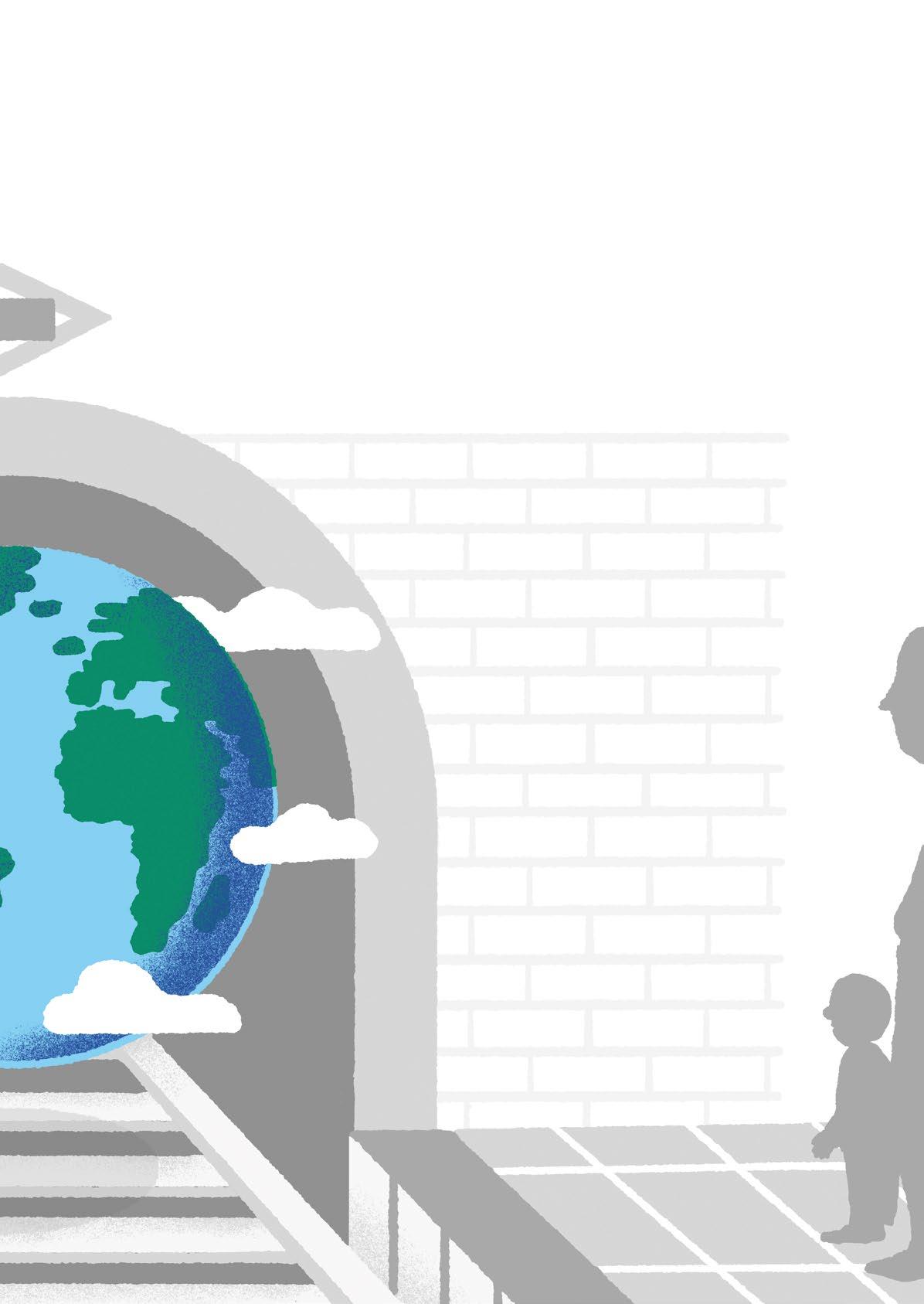
MADRID
84.56 km and 88 stations
Ferrovial built most of the nearly 85 km added to Madrid Metro since 1927, although most of the expansion work took place from the 1980s onwards. The company was involved in nearly all the extension projects. The last project in this package was the extension of Line 9 to Mirasierra under a contract awarded in 2009; since then, the pace of tenders has slowed, although the company has obtained contracts for upgrades and expansion as a direct supplier.
BARCELONA
47.8 km and 20 stations
Barcelona Metro is one of the city's top means of transport in terms of user numbers. Ferrovial is working on Metro Line 9. It is currently completing various contracts on Section III, consisting of building approximately 5 km of tunnel with a diameter of 12 m, 9 km of track and catenary, 7 stations and a crossover cavern, with a total budget of €495 million at present.
PARIS
Planned: 6.7 km and 3 stations
Grand Paris Express, the largest infrastructure project in Europe, involves extending Paris Metro by adding 68 new stations and 200 km of line. As part of this initiative, Ferrovial has been awarded the construction of a section of line 18 for €440 million. The work includes digging 6.7 km of tunnel between the Saint-Quentin Est and Versailles Chantiers stations, west of Paris, as well as the construction of three stations and eight auxiliary ventilation structures.
GRANADA
3.5 km and 6 stations
The first steps in the construction of the Granada subway, in southern Spain, were taken in 2008. Ferrovial was awarded the section located between the River Genil and the Health Sciences Technology Park. In 2017, the Alcazar Genil station received the Opinion Award at the 59th Fomento de las Artes Decorativas (FAD) Awards.
VALENCIA
7 km and 7 stations
Ferrovial worked on the Valencia Metro between 2002 and 2007, including the construction of an electrified meter gauge twin-track spur line for access from Line 1, the construction of Line 5 between Ayora and Marítim, and the extension of line T2.




New York A PLACE TO WORK
Guillermo Ripado and Tori Palermo tell us what makes their life in New York so special and identify their favorite places in the city.
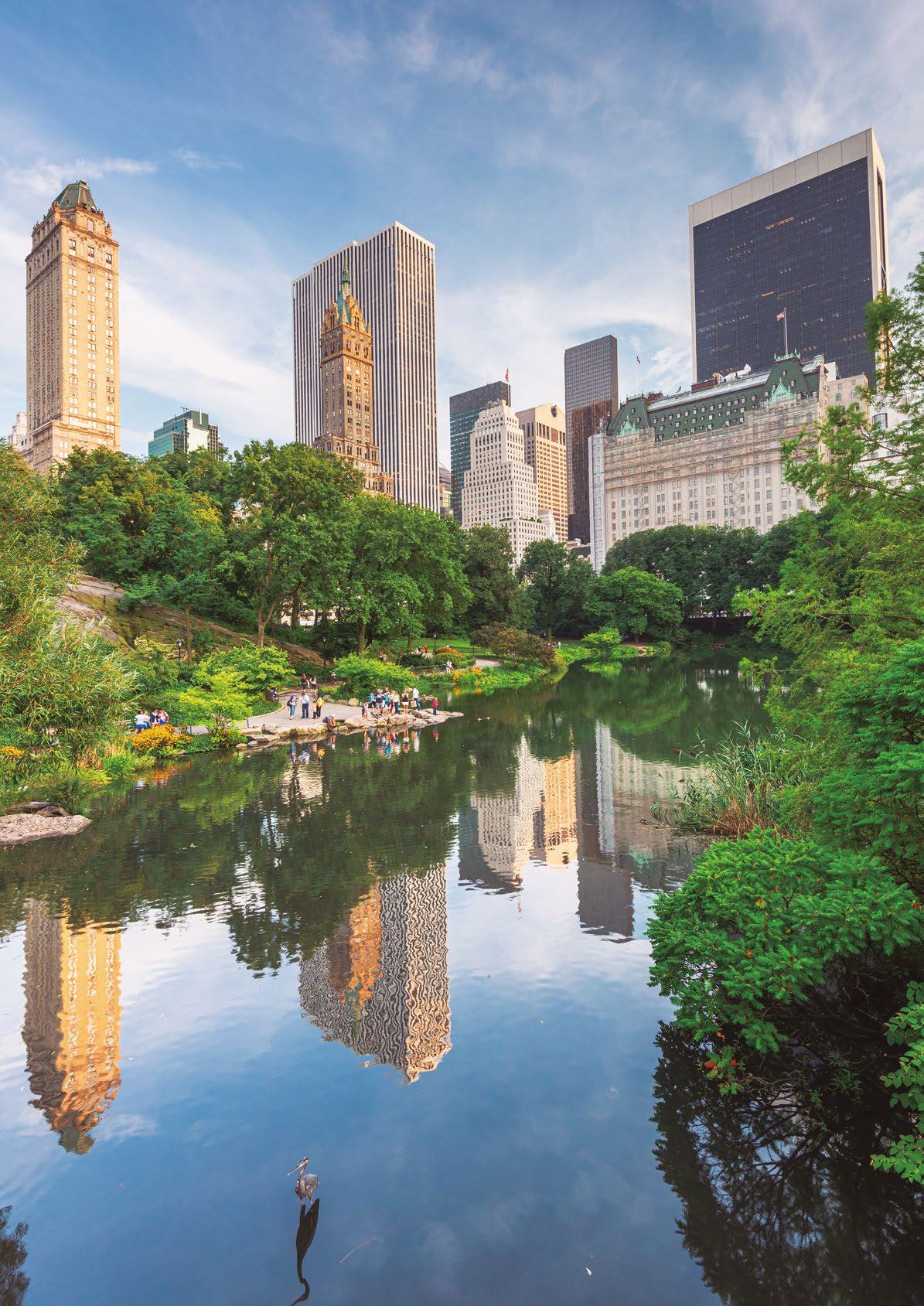
Vibrant, effervescent, full of life, inexhaustible. There are many words to describe New York. Although the truth is that you have to live there (or at least visit it) to get to know it. The city that never sleeps is the setting for thousands of movies, the place where skyscrapers seem to touch the clouds, and home to millions of people who enjoy one of the most cosmopolitan environments in the world.
New York is also home to Guillermo Ripado and Tori Palermo. Two Ferrovial workers who left their homes in Spain and Texas, respectively, to seek their fortune in the Big Apple. They tell us about their best experiences, their favorite places and what's so special about their life in New York, a city that welcomed them and where they feel at home. Both agree on one thing: living in a different city far from home has given them experiences they could never have imagined.
TRAVEL
Guillermo's life in New York
MANAGER AT JFK FOR FERROVIAL
In April 2022, Guillermo Ripado packed his bags and moved from Spain to New York to participate in the new Terminal One project at John F. Kennedy International Airport (JFK). Since then, he has taken the opportunity to get to know the city, discover some of its many secrets and explore new places.

Starting a new life away from home has exposed Guillermo to new experiences. “I think I've eaten more pizza here in New York than in all my life up to this point,” he says. However, one of his favorite restaurants is Spanish: Casa Dani, where he goes to enjoy paella and their excellent tuna dishes. For going out, he recommends the North Williamsburg neighborhood, which is home to a multitude of restaurants, bars, stores, gyms, and cafes. “That area has a great atmosphere, a bit hipster, and some very interesting rooftops with spectacular views,” explains Guillermo.
One thing he really likes doing is taking a ferry along the East River. “You can see the whole Manhattan skyline, from Wall Street to Midtown, and sail past the main landmarks. It's a great trip to do on deck if the weather is good,” he says. Another of his favorite places is DUMBO, an area in Brooklyn with a great atmosphere that
has served as a backdrop for numerous films; he also likes to go to the top of One Vanderbilt, a skyscraper offering great views of Manhattan and the rest of the city.
Life in New York revolves around other spaces as well: the parks. “There is a great atmosphere in Domino Park in the summer, as people go there to play sports and watch the sunset,” explains Guillermo. "Bryant Park has lots of free concerts, food stalls, yoga classes, etc.” Another of his favorite spots is Governors Island: once a military base, this tiny island can easily be reached by bicycle and now houses a spa where you can enjoy views of Lower Manhattan without leaving the pool.
His final recommendation is based on one his favorite pastimes in New York: going to the cinema and theater. Guillermo recommends going to the Hirschfeld Theatre to see Moulin Rouge. The past several months in New York have enabled Guillermo to get to know the city like a true New Yorker, discovering its secrets and seeing more than what tourists get to experience in a short visit. But there is still a lot left to explore: luckily, the city that never sleeps always has a surprise up its sleeve.
23 INFORVIAL / 2023
The Vanderbilt is one of the tallest buildings in Manhattan, together with One World Trade Center and Central Park Tower. It offers 360-degree views of the city. It's a must-see”
A new home for Tori
Growing up, whenever she visited New York with her family, Tori Palermo would make a stop at Lombardi's Pizza, the city's oldest pizzeria. At that time, she could not imagine that, years later, she would leave her native Texas and move to this great city. Today, her work revolves around the construction of the New Terminal One at JFK International Airport.
“The personal growth you experience living in another city is hard to put into words. This is my first time living anywhere outside of Texas, so I was a bit weary at first. But the past two years in New York have absolutely been the best of my life. I wouldn’t trade this experience for the world,” says Tori. “I’ve met new friends, found new hobbies, started a new job... The list goes on and on. There is always something new to experience here!”
Although Lombardi's is still one of her favorite restaurants, Tori has been adding new places to her list over the years. One of them is Craft, where she and her husband, Adam, celebrated their engagement. “My family even flew in from Texas to celebrate with us. Craft is owned by celebrity chef, Tom Colicchio, from the show Top Chef, one of my favorite shows (I’m a huge foodie!). So, being able to
celebrate a major life event at Craft is a special memory we’ll cherish forever,” says Tori. Some of Tori's favorites include places where she can enjoy nature. “One is Domino Park, in Williamsburg (Brooklyn). It’s right on the East River so you get these amazing waterfront views. There are spacious green lawns facing the water, plus food trucks, a dog park, you name it! It’s the perfect place to have a relaxing outdoor day with friends.”
During the winter months, Tori goes skiing at places like Mountain Creek, in New Jersey. “New York is great because here we have the best of both worlds: we live in one of the biggest cities in the world, but we’re also only an hour away from amazing mountains, waterfalls, lakes, and the ocean.” But her list of essential places doesn't stop there: she loves taking in a Broadway show or visiting the Met (The Metropolitan Museum of Art). It’s easy to lose a whole day exploring inside, and there is something for everyone,” she adds.
Tori says that these two years in New York, full of experiences and discoveries, have been the best in her life. In addition to the city, its streets and parks, the people are also an important factor. Her husband and their many friends have made the city feel like home.

24 INFORVIAL / 2023
HR MANAGER
IN THE CONSTRUCTION OF JFK NTO BY
FERROVIAL
New York is great because here we have the best of both worlds: we live in one of the biggest cities in the world, but we’re also only an hour away from amazing mountains, waterfalls, lakes, and the ocean.”
Recommendations for Guillermo and Tori


Somewhere to relax
Guillermo: Governor's Island, where you can enjoy views of Manhattan from the spa pool, or a bike ride.
A restaurant
Tori: Craft, in the Flatiron, under Tom Colicchio of Top Chef fame.
An essential view
Guillermo: the Manhattan skyline from Brooklyn Heights, the famous neighborhood overlooking the East River.

An outdoor location
Tori: Mountain Creek, in New Jersey, where you can ski and enjoy nature.


An oasis of nature in the center of the city
Guillermo: Central Park. It is the most famous park in the city (and perhaps the world) for good reason.
A special park
Tori: Domino Park, in Brooklyn. It’s right on the East River so you get these amazing waterfront views.
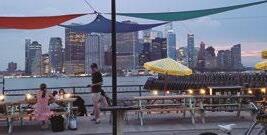

COMPETENCE + RECOGNITION
Two pillars of safety and health
Several initiatives seek to give workers the confidence and tools they need to make workplaces safer and healthier.
SPECIAL TRAINING PROGRAM FOR LEADERS
Operational leaders have a lot to contribute to safety. Working on the front line, they know their teams and can have a positive influence on them. For this reason, Ferrovial is implementing a specialized training program to develop their leadership skills and enable them to take the lead in operational health and safety at all times.
The leadership training program goes hand in hand with the current Health and Safety strategy, which seeks to involve each and every employee in making work environments safer. It is based on a simple but effective premise: that each of us has an essential role to play. Together we can inspire, motivate, enable and empower teams and employees to lead change.
"This strategy puts the spotlight on our employees, because they play an essential role in enabling us to meet expectations and achieve our objectives worldwide. It also focuses on integrating safety, health and well-being as a key value in our daily work, not an obligation," explains Inés Cruces, Head of Health and Safety at Ferrovial. "It's not just about avoiding accidents; it's about creating a corporate culture — a Ferrovial way of doing things."
The program focuses on developing a range of skills, such as the ability to involve people and teams in all aspects of safety and health, to plan work collaboratively and to work safely in the presence of hazards. It also seeks to enable leaders to transmit this learning to their teams.
There are huge advantages to training leaders in this area. It ensures that they can directly influence workplace safety in their day-to-day work, which can improve workers' well-being and the quality of operations. It also conveys ideas and practices that have contributed to reducing problems and accidents over the last decade. "In addition, these leaders gain the power to know, say and do what is necessary to drive a sustainable improvement in safety and health throughout the organization," Cruces adds.
The ultimate goal is to integrate Health and Safety values and best practices into the business. That they should be seen not as something isolated but as a solution for improvement. "Historically, Health and Safety has been treated as the unit to call if something
goes wrong, to get clear instructions on what to do. In order to get to where we want to be, we must enable our leaders and workers to feel that they are in charge, that they have the ability to create change and to identify where we need to improve. The ideal is to evolve until Health and Safety becomes a strategic catalyst for creating better teams," explains Inés Cruces.
The first round, in 2022, involved 100 people from the various business units around the world. “We’re planning to launch further calls in 2023 to be able to reach more leaders in all of our business and geographies”, Cruces adds.
A DIFFERENT COURSE
The course encourages active learning by involving leaders in work-based assignments. The results are reviewed in sessions where students interact with each other and receive feedback from experts. This is a departure from the conventional classroom approach, which is passive. According to the course providers, Safety Futures, learning leads to action, which in turn leads to more learning — with tangible benefits at all levels.
26 INFORVIAL / 2023
HEALTH AND SAFETY
RECOGNITION PROGRAM
Agesture, an intercession, a kind word or a helping hand without having to ask for it. A friendly, respectful attitude on a daily basis is essential to ensure a safe, healthy work environment. But some people go even farther: rather than confining themselves to their own responsibilities, they work to ensure their own safety and that of others. At Ferrovial, their efforts do not go unnoticed.
The new recognition program seeks to reward employees whose safety, health and wellness performance goes beyond their normal duties and responsibilities. "It recognizes decisions, actions and initiatives that demonstrate the 'Always Safe, Always Ready' spirit and contribute to making safety, health and well-being a core value of our business," explains Inés Cruces, head of Health and Safety at Ferrovial. "This is recognition of our colleagues' leadership on this issue and the impact their small gestures or major practices have had on their workplace."
The initiative follows in the footsteps of Ferrovial's HSW (Health, Safety and Wellbeing) awards. Introduced two years ago, the awards are granted in three categories that recognize individuals, teams and the best innovative solution. One winner and three runners-up are chosen each year from among all the entries submitted in each category. The awards have been met with enthusiasm within the company and the number of nominations has increased every year.
The recognition program seeks to complement these awards while turning on its head the idea that there can only be one winner. So, instead of a one-time event, this program is an ongoing initiative: once per quarter, Ferrovial assesses and rewards the
LEADERSHIP | COMPETENCE RESILIENCE | ENGAGEMENT
Recognition Program
contribution by all the candidacies that meet its standards. At the same time, the awards for the top-rated contribution each year will be maintained. "In this way, we avoid the idea that it is impossible to obtain recognition based on the fact that there can only be one winner," says Cruces.
"We're human — we like to be recognized and rewarded, both at work and personally, when we do a good job or make an effort. From an early age we are taught that good work is always rewarded, and that is this program's goal: that everyone who goes beyond their responsibilities and what is required of them receives recognition for their efforts," says the head of Health and Safety at Ferrovial.
The awards can be granted for exceptional initiative, extraordinary stories, safety milestones and unique innovations. Ferrovial's teams include people who go above and beyond what is asked of them every day and help create a culture of trust. Through their deeds, more and more people are helping to make us all better together. Now, the protagonists of these stories can receive an award that recognizes their efforts and values.
LASTING AWARDS
These awards are not just recognition — they can be seen and touched. The awards consist of certificates signed by Ferrovial's CEO. It was decided to present tangible awards for all that they symbolize: are a lasting reminder of hard work and achievement. "We all like to be recognized by senior management so the certificate isn't just a reminder to you or the people around you — it's something everyone can see," says Cruces. These are valuable items that signify hard work, commitment and the desire to improve as a worker and as a colleague.
27 INFORVIAL / 2023
Each of us has an essential role to play. Together we can inspire, motivate, train and empower workers to lead change.
FERROsolidaric TO THE CORE: WILL YOU JOIN US?
Bringing clean water to communities in Africa, Asia and Latin America, building schools, rehabilitating shelters and responding swiftly to emergencies. Ferrovial has a number of programs to share our resources and knowledge with those who need them most and make the world a better place. The Stronger Together, Social Infrastructure and Social Action in Spain programs are complemented by our emergency response initiatives.

We need everyone to contribute in order to make these programs a reality. Ferrovial's people are the mainstay of these programs: without their solidarity, support and commitment, the projects would not be possible. With their help, in recent years we have improved living standards for thousands of people in Spain and around the world. Together we have made a difference.
Each program has its specific features. Humanity faces a broad range of challenges: poverty, inequality, lack of access to infrastructure, and crises such as the HIV/AIDS pandemic and the war in Ukraine. No matter what area you feel committed to, Ferrovial has a project for you.
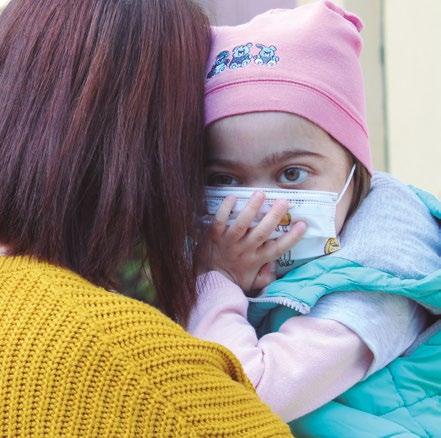
Here we tell you about our social programs and how you can contribute so that everyone benefits from solidarity.
STRONGER TOGETHER
We are stronger together at Ferrovial. Under this initiative, over the last few years the company has collaborated with not-for-profit organizations to improve the living conditions of vulnerable people and those at risk of social exclusion. Among other actions, Stronger Together has contributed to improving medical care for hospitalized children, to creating schools, to fighting hunger, and to supporting refugees and victims of violence in many countries around the world.
It's easy to help Stronger Together: Ferrovial employees can make a donation directly from their paycheck. The donations are accumulated in a general fund and, in December, the company matches the total amount of donated by the employees in the year. Every euro counts; the more the donors give, the more the company gives.
HOW TO SUPPORT THIS INITIATIVE
If you are not yet a Stronger Together donor, you can sign up on the new Workday platform. In the action menu, select "create request", and choose the "donations" category. You decide how much to donate each month.
Then it is time to choose how to allocate the funds. Again, the employees have a say: everyone who donated can vote for the candidacies shortlisted by the company. The ones with the most votes receive funding.
Since it was established in 2005, Stronger Together has supported 35 projects. It has contributed to improving the living conditions of more than 170,000 people in 24 countries and to the conservation of nature and biodiversity. The goal is to continue increasing those numbers. How about playing a part with Ferrovial?
28 INFORVIAL / 2023
VOLUNTEER PROGRAM
With
information from: Ricardo Navas.
HOW TO SUPPORT THIS INITIATIVE
The volunteer profiles required for each project are published on the Intranet each year. Keep an eye on the company's internal channels and, if you fit any of the profiles, send in your CV and cover letter.
SOCIAL INFRASTRUCTURE
Water is the basis of life. However, millions of people around the world still lack safe drinking water and basic sanitation. To put an end to this situation, Ferrovial works with not-for-profit and social action organizations to build and improve water and sanitation infrastructures in Africa and Latin America. And it does so by sharing its most valuable resource: knowledge.
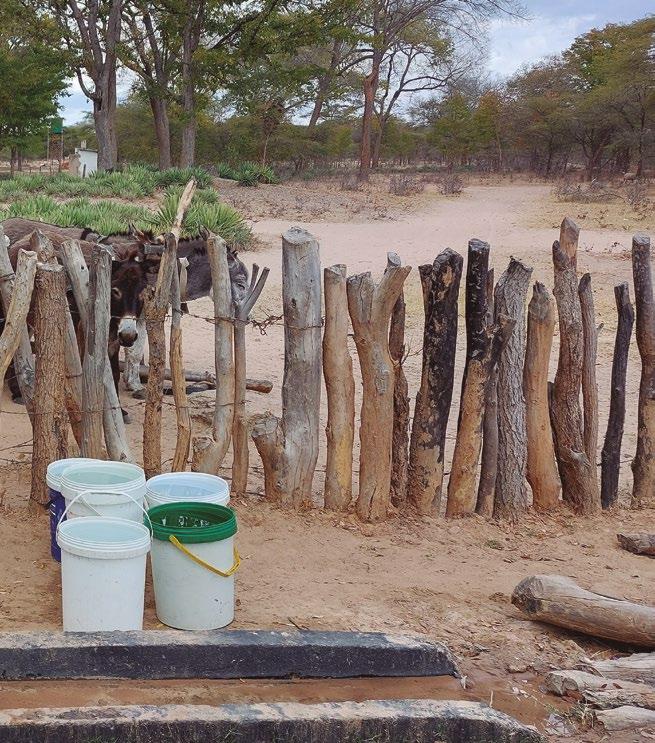
To bring water to those who need it most, the company relies on its employees. Everyone is welcome to contribute their experience and skills to projects as a volunteer. In addition to contributing to project design and management, volunteers can also participate in executing projects in the form of a two-week field trip to the site. To date, engineers, surveyors, technicians, managers and many other profiles have helped to make access to water a reality for thousands of people.

The Social Infrastructure program is able to transform living standards for the most disadvantaged communities. It reduces the incidence of disease and infant mortality, promotes equality, and increases income levels, among many other advantages. To date, Ferrovial volunteers have contributed their work and knowledge in more than 25 different projects, providing access to water to more than 220,000 people in Peru, Colombia, Mexico, Ethiopia, Kenya, Tanzania, Uganda, Ghana and Zimbabwe.
EMERGENCIES
In recent years, two major crises have tested our ability to cope with emergencies: COVID-19 and the Ukraine war. Ferrovial stepped up to help in both cases, with the support of its employees. More than 400 workers collaborated as part of their job and many others contributed to the Ferrovial Juntos COVID-19 fund and the Juntos Sumamos por Ucrania campaign. Their support made it possible to ensure critical services for the population, such as ambulances, the delivery of basic necessities, and the reception of displaced persons fleeing the war, among many other actions.
HOW TO SUPPORT THIS INITIATIVE
In the event of an international humanitarian emergency, Ferrovial will launch a specific campaign and will announce the bank accounts set up in each country through newsletters and the Intranet. The amount of each donation is voluntary; what matters is that we all join forces.

SOCIAL ACTION IN SPAIN
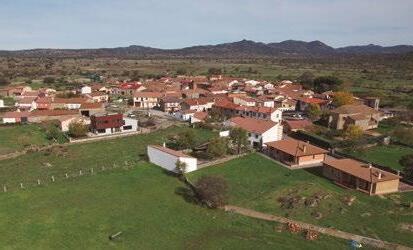
Poverty and inequality have been increasing in Spain in recent years. Ferrovial's Social Action in Spain program supports organizations fighting hunger and malnutrition by improving their infrastructure and resources. Since 2012, Ferrovial has improved access to proper food for more than 60,000 people, refurbished shelters for the homeless and adapted kitchens and food pantries, among other actions. With the support and cooperation of its employees, the company has enabled organizations such as the Red Cross, Caritas and the Altius Foundation to make their projects a reality.
Ferrovial's commitment to the community focuses on the most vulnerable, always with the support and participation of its employees. The objective of all these programs is for the company and the employees to become committed players — we want to be FERRosolidaric to the core, not merely donors.
29 INFORVIAL / 2023
Ferrovial's people are the mainstay of the social programs: without their solidarity and support, the projects would not be possible.
Ferrovial's new energy business in the US

Renewables are a fast-growing market on a global scale. Seeking opportunities in this sector, Ferrovial Energy Solutions and Webber have joined forces and are working on their first energy project in the United States.
Last year, Ferrovial Webber Energy, a company created by Ferrovial Energy Solutions and Webber, was awarded an early package of its first project, Liberty Solar, a 72 megawatt (MW) photovoltaic plant occupying 350 acres in Harris and Liberty counties. Both teams bring their own set of strengths: the technical and sector-specific knowledge from Ferrovial Energy Solutions and the local contract footprint resources from Webber.
Engineering work for Liberty Solar started in July 2022 and site preparation began in December. The award of the full project is expected in February 2023. The facility is scheduled to begin operations in May 2024 and will be able to generate 137 gigawatt hours (GWh) of clean energy per year. It will avoid the emission of more than 85,000 metric tons of CO2 into the atmosphere while producing enough energy to power approximately 9,500 homes.
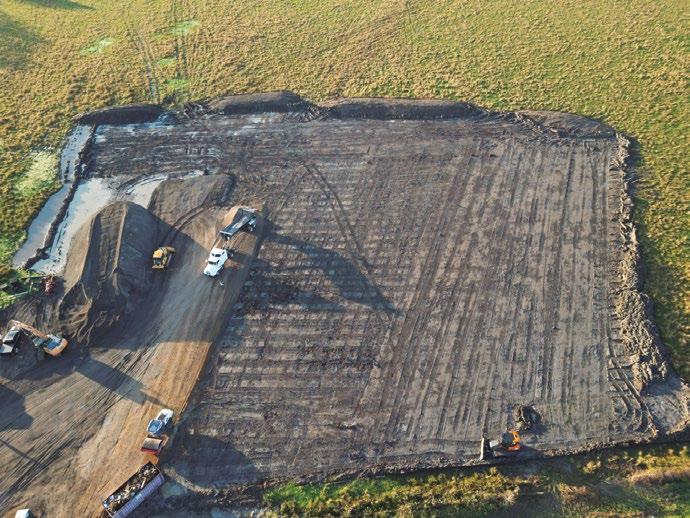
Ferrovial Webber Energy, shares what we look for in a new project: “We will start as an engineering, procurement and construction (EPC) contractor in Texas and the geographies where Webber or Ferrovial are already present. The projects will essentially be turnkey utility-scale solar PV, wind and battery storage systems.”
Though Texas has long been synonymous with the oil and gas industry, it is now one of the leading geographies in the US in the development of renewable energy generation. It is the nation's top state for wind-generated electricity, with several identified high-quality wind resource zones, and is second only to California in installed solar capacity in 2022. The Texas landscape and climate offer great potential for wind and solar plants.
The project scope includes more than 130,000 solar photovoltaic (PV) modules; 16 power stations; more than 1,300 trackers; more than 22,000 steel piles; over 5,000 linear feet of roads; and 20,000 linear feet of perimeter fencing. With this first project underway, the energy team is already looking towards the future.
Ignacio Ugarriza, Area Manager in
Webber has developed an unmatched footprint and presence across Texas State and has recently expanded into other states. Having delivered hundreds of successful projects in other disciplines, Webber has acquired a deep understanding of the peculiarities of the construction market, which is a major asset that will enable the new company, Ferrovial Webber Energy, to successfully develop and expand the renewable power generation business in the US, considering also the positive environmental and social impact.
30 INFORVIAL / 2023
BIZNEWS
current affairs at a glance
World's second floating concrete offshore wind platform completed
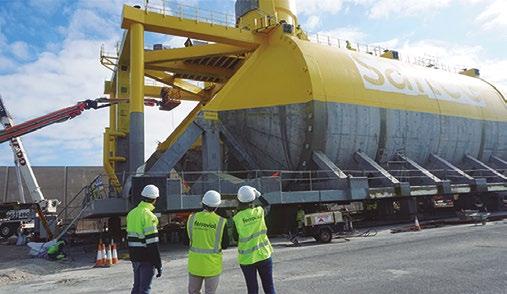
The world's second floating concrete offshore wind platform (and the first in Spain) has been completed in the port of Bilbao. This is a unique project: a huge concrete catamaran focused on producing energy for the future. DemoSATH is the first project of its kind to be carried out by Ferrovial, which was responsible for manufacturing and assembling the SATH floating platform.
This innovative, pioneering places the company at the forefront in this area of innovative construction. DemoSATH is the first floating offshore wind turbine developed in Europe. The solution, owned by customer Saitec Offshore Technologies in partnership with RWE Renewables, positions offshore wind turbines to produce 2MW of energy that will be connected to the Spanish grid.
Silvertown, one of the most complex projects in the United Kingdom, wins an award
The Silvertown tunnel is one of the most complex projects undertaken in the United Kingdom to date. TfL (Transport for London) and Riverlinx SPV (Special Purpose Vehicle) engaged Riverlinx CJV (Construction Joint Venture) to design, build and deliver the Silvertown Tunnel. Riverlinx CJV is a partnership between leading civil engineering companies Ferrovial Construction, BAM Nutall and SK Ecoplant. Once completed, the tunnel will be operated and maintained by Riverlinx SPV. Riverlinx SPV is managed by Cintra, the toll road division.
The tunnel boring machine (TBM) used to build the new road tunnel under the River Thames linking North Greenwich and Silvertown, east of London, was named Jill. Tradition dictates that TBMs must be given an official name before they begin work. On this occasion the name was chosen in recognition of Jill Viner, who became London's first female bus driver in London in 1974. The name was considered to be very appropriate as the tunnel will radically improve bus access across the river in this area.
The TBM has a diameter of 11.91 meters, equivalent to almost three double-decker buses, and is approximately 82 meters long. It weighs 1,800 tons, including the huge 1,200-ton shield, which is 95 times the weight of a double-decker bus.
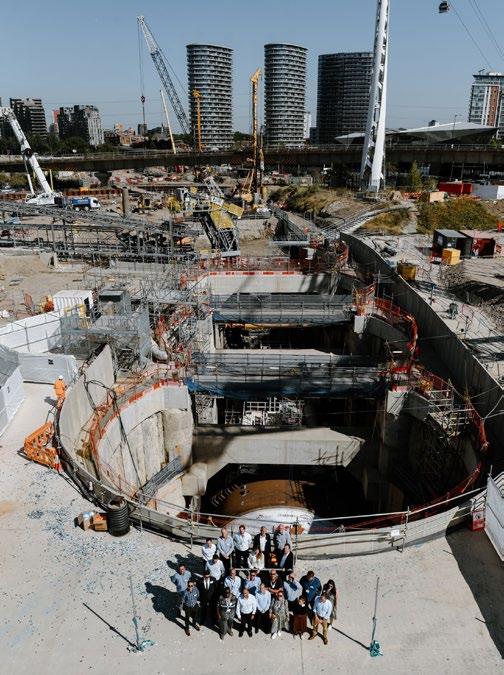
The Silvertown project was awarded in the Innovation in Shaft Design & Construction category at the NCE Tunnelling Awards in recognition of innovative solutions and smart technologies that improve the design and construction of shafts for tunnels and large excavations. Ferrovial's solution was a first in the UK as it combined four 21.2-meter diameter shafts connected through T-shaped counterfort structures.
I-66 Managed Lanes in Virginia now fully operational

With an investment of USD 3.7 billion, it is one of the largest public-private partnerships in the US infrastructure sector this century. Ferrovial, through subsidiary Cintra, opened, on schedule, the I-66 Managed Lanes toll road in the state of Virginia, which leads to the outskirts of Washington D.C.
Ferrovial Construction, in partnership with local company Allan Myers, designed and built the 22.5-mile (36-kilometer) infrastructure. Cintra has a 50-year concession to operate and maintain this toll road. Managed lanes represent a solution for congested urban corridors. The company now has five managed lanes in the US: LBJ, NTE & NTE 35 W, in Texas; I-77, in North Carolina; and I-66, in Virginia.
31 INFORVIAL / 2023
FIGURES
Working for a sustainable economy
TRANSMISSION LINES
456km in construction and operational
PHOTOVOLTAIC SOLAR ENERGY
50MWp in construction
ZITY
1,500 100% electric vehicles
CIRCULAR ECONOMY 800,000 tons of MSW managed per year
4 municipal solid waste (MSW) treatment plants in Yorkshire, Milton Keynes, Cambridge and the Isle of Wight, with a combined capacity to treat about 800,000 tons per year.
32 INFORVIAL / 2022




 Director of Communication and CSR
Director of Communication and CSR































































